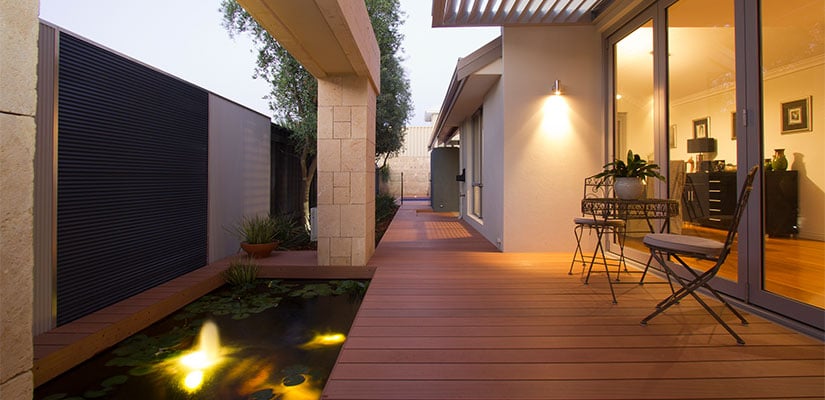Why Composites are Revolutionizing Building And Construction Products
Why Composites are Revolutionizing Building And Construction Products
Blog Article
Unlocking the Ecological Benefits of Recycled Compounds in Building and Design
In the world of building and layout, the utilization of recycled composites holds considerable assurance for boosting sustainability practices and reducing environmental effect. The change in the direction of a more lasting future in these sectors pivots on unlocking the complete possibility of recycled compounds.

Environmental Effect Reduction
The reduction of ecological influence with making use of recycled compounds in construction and design plays a crucial function in lasting methods. By integrating recycled compounds right into building products, the building and construction sector can significantly reduce its carbon footprint and contribute to a more environmentally friendly future. These sustainable materials, made from repurposed plastics, timber fibers, or various other recycled elements, provide a viable option to conventional building and construction materials without compromising on top quality or toughness.
Recycled compounds help divert waste from garbage dumps and decrease the demand for removing resources, hence conserving natural deposits. Additionally, the production procedure of these composites typically takes in less power and discharges fewer greenhouse gases contrasted to generating virgin products (composites). This change towards using recycled compounds not just reduces ecological damage but likewise advertises a round economic situation by motivating the reuse of materials that would certainly otherwise be thrown out
Waste Minimization
With an emphasis on minimizing waste in construction and layout, the combination of recycled composites offers a sustainable solution to lower ecological effect. Waste reduction is an essential element of sustainable techniques, and the use of recycled composites presents a chance to achieve this objective properly. By making use of products that have already offered their initial objective, such as recycled plastics or recovered wood fibers, the building and design industries can significantly minimize the quantity of waste created and sent to land fills.
Recycled composites have the possible to draw away significant quantities of waste from conventional disposal methods, contributing to a more round economic situation where sources are made use of successfully. Additionally, the manufacturing process of recycled composites often consumes less energy and generates fewer exhausts compared to virgin materials, further minimizing the ecological footprint of construction and layout jobs.
Carrying out waste reduction techniques through the unification of recycled compounds not only assists in preserving all-natural sources yet additionally advertises an extra sustainable method to building and making for a greener future.
Power Preservation
Including recycled compounds not only minimizes waste in building and construction and layout however also plays an essential role in improving power conservation methods within the industry. Making use of recycled compounds in construction can substantially contribute to energy conservation through different methods. The production of virgin materials typically needs significant power inputs, whereas making use of recycled composites eats much less energy, thereby reducing overall energy consumption. Furthermore, integrating recycled compounds can add to far better insulation residential or commercial properties in structures, reducing the demand for too much home heating or air conditioning, and consequently reducing energy usage for climate control. Moreover, the lightweight nature of lots of recycled composites can lead to lighter structures, needing less power for transportation and installment. By advertising the usage of recycled composites in building and construction and design, the market can make considerable strides in the direction of accomplishing power effectiveness and minimizing its carbon impact, inevitably adding to an extra sustainable constructed setting.
Carbon Impact Reduction
Enhancing sustainability practices with the use of recycled compounds in building and design substantially minimizes the carbon footprint of the industry. By incorporating recycled materials right into the manufacturing of compounds, the demand for virgin sources decreases, leading to reduced power usage and greenhouse gas exhausts connected with traditional manufacturing procedures. This decrease in carbon footprint is essential in combating environment change and promoting an extra eco-friendly strategy to building and design.
Additionally, the use of recycled composites likewise assists in diverting waste from land fills, thus alleviating the environmental influence of disposal and promoting a round economy. The carbon impact reduction attained through the fostering of recycled composites aligns with the global press in the direction of lasting practices and the decrease of industrial emissions. It showcases a dedication to responsible resource monitoring and a shift towards greener alternatives in the construction and style markets. Ultimately, by prioritizing the assimilation of recycled composites, the industry can make significant strides in lowering its carbon footprint and adding to a more sustainable future.
Sustainable Future
The assimilation of recycled compounds in building and layout not just addresses prompt ecological concerns but likewise lays a solid structure for a lasting future in the industry. By incorporating recycled compounds right into look at this web-site building products and products, the building and construction and design markets can substantially reduce their dependence on virgin resources, resulting in a more circular economy. This shift in the direction of sustainability is critical for minimizing the environmental effect of traditional building and construction practices, which often cause high degrees of waste generation and source exhaustion.

Verdict
Finally, recycled compounds supply substantial environmental advantages in construction and style by minimizing ecological effect, decreasing waste, saving energy, reducing carbon footprint, and promoting a sustainable future. Embracing the use of recycled composites can add to an extra environmentally-friendly approach to building and layout, ultimately causing an extra sustainable and greener future for all.
The reduction of environmental influence via the usage of recycled composites in construction and style plays a critical role in sustainable practices.With a focus on minimizing waste in building and layout, the assimilation of recycled compounds supplies a sustainable service to lower ecological impact. By advertising the use of recycled composites in building and design, the sector can make significant strides in the direction of accomplishing power efficiency and decreasing its carbon footprint, ultimately contributing to a more sustainable constructed setting.

Report this page